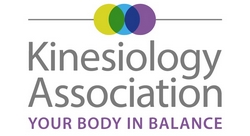 £0
£0Kinesiology

The basic tool within kinesiology is the muscle response test; this is the ability to hold a muscle against light pressure. Initially, testing a series of muscles highlights which area to focus upon. Each time a relevant factor is introduced the muscle's response changes, similar to a switch. Suggestions and advice may include nutritional supplements, relaxation techniques, lifestyle changes, foods to remove or cut down on and more.
Next Previous Testimonials
Working with children
“I honestly cannot thank you enough for today. I feel like a massive weight has been lifted. It was so lovely to see (my 8 year old) relaxed and giggling after an emotional 6 months."
Digestive support
"Allison is a kind, patient and caring practitioner. I found she has great empathy with her clients and works with them to get their health back on track, giving good, sound advice on diet and lifestyle. She has helped me so much, which is very much appreciated. I am now feeling so much better." Anne
Understanding My Body
"This was by far the most interesting appointment I’ve ever had. So helpful to understand my body and how it’s working and how I can correct it hopefully, with the help of Allison." Laura
Using Kinesiology
"After visiting another kinesiologist for over 20 years I wasn't quite sure how easy it would be to start afresh. However, I needn't have worried- Allison is very knowledgeable, extremely professional and I had a fantastic treatment. I've already recommended Allison to a local friend who is interested. I'm so pleased that kinesiology will continue seamlessly as a terrific source of healing and nutrition." JP, July 2022
Teaching the Diploma
Thank you for being a great teacher, storyteller, mentor! Thank you for sharing your knowledge. Very grateful. Also a huge thank you for pushing me and helping believe in myself that I am a great kinesiologist! Jessica
Patient with dystonia and Parkinsons
After you treated my Dad, there was such a significant change in the abnormal dystonia, posture (he looked 2 to 3 inches taller) and his ability to walk/ speed of walking. If I wasn't sold on kinesiology already, I definitely am now! Thank you so much! AC
Getting to the cause
Allison is very knowledgeable and thorough and has a lovely manner. I always have the impression that she has all the time in the world to get to the root cause of whatever problem I have and is then able to provide me with a solution. EC
Knowledgeable
Allison is fabulous! Experienced, supportive, an excellent listener, so knowledgeable and cares so much. CM
Enjoyable
My daughter (aged 9) enjoyed her appointment, and she is looking forward to her next. Such a lovely atmosphere and attitude. Very impressed, looking forward to an improvement in my daughter's health with the help you gave. So pleased with the treatment I think I’ll bring my son along for an appointment in the near future. Thank you. LH
Reassured
Always so reassured by Allison’s knowledge. Never any pressure to have additional appointments going forward. Thank you Allison. JG
Gut health
Our quality of life has improved so much because I'm not stressed all the time, anymore. To describe the improvement as a miracle is not an exaggeration. I can now go out without worrying and continue my work without constant interruptions. Truly amazing and we are so grateful. DS
Clearer skin
I saw you at the end of April, you advised no gluten or chocolate. I am delighted to tell you that my psoriasis has completely cleared. JG
Teaching
Thank you Allison, I have learnt so much and am so pleased to have embarked on this journey. Thank you for sharing your knowledge and wanting us to be the best kinesiologists we can be. Your passion for the profession really shines through and is very motivational. Thank you for your patience and extra explanations when I have felt overwhelmed or confused. Anna J








